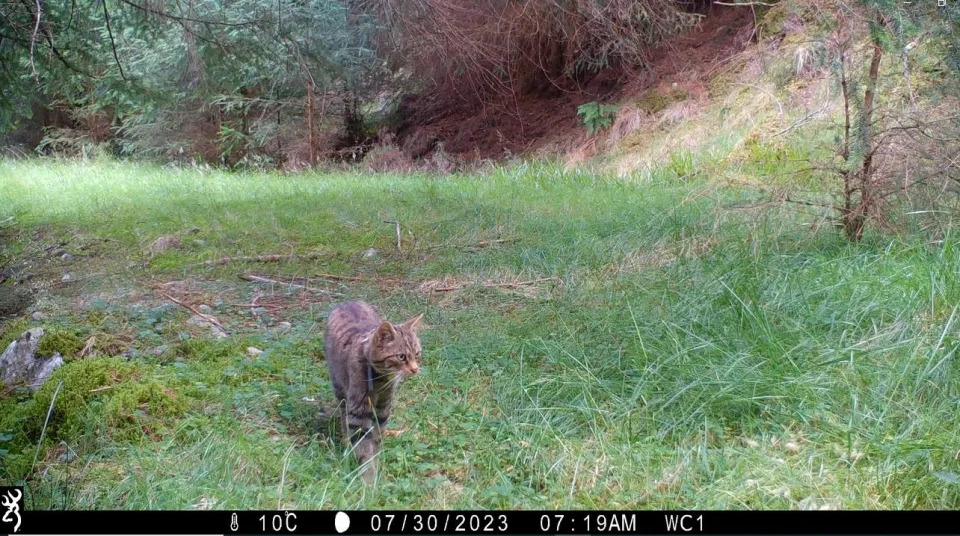Good to hear they are thriving BUT these are NOT Scottish wild cats as they went extinct officially in the 1860s at the latest.
Released wildcats thriving ahead of ‘challenging’ winter
Scottish wildcats released into the wild in the UK for the first time are thriving with only one death, according to conservationists.
Nineteen wildcats were released in the summer in small clusters within the Cairngorms National Park region, and they are being tracked using GPS-radio collars.
Another 13 kittens have now been bred for the Saving Wildcats project, a collaboration between the Royal Zoological Society of Scotland (RZSS), NatureScot, Forestry and Land Scotland, and the Cairngorms National Park Authority, as well as partners in Sweden and Andalucia, Spain.
The kittens, born at RZSS’s Highland Wildlife Park, will be transferred to pre-release enclosures to prepare for their release into the wild next the summer, once they are aged six to eight months.
The critically endangered wildcats now roaming wild hunt for mice and rodents, and live in grassland and woodlands to hide from dogs and walkers, but winter is expected to be hard for them due to a lack of prey and the harsh weather.
Keri Langridge, Saving Wildcats in-situ conservation manager, said: “Most have stayed local to the release locations, while others have explored more widely across Badenoch and Strathspey.
“The cats are typically using a mixture of rough grassland, mixed woodland and riparian habitats, which provide prey such as mice and voles, as well as cover to hide from disturbance threats, including people and dogs.”
The wildcats and their den sites are protected by law and it is an offence to deliberately or recklessly disturb one, with nature-lovers who do come across them urged not to share the location.
Helen Senn, RZSS head of science and conservation programmes, said: “The first release of wildcats into Britain has been a success so far. Life in the wild is full of risks and while most of the wildcats are currently doing well, we must remember that these are now wild animals that are likely to face significant challenges as we move into winter.
“It would be highly unusual for all the released wildcats to survive the first year. The field team were alerted to a potential mortality through movement data recorded by GPS collars. They searched at the last recorded location and were able to recover the body.
“A post-mortem examination carried out by our expert veterinary team revealed the cat sadly died of peritonitis, an infection. Further releases and many more years of conservation action will be required to increase the likelihood of saving this iconic species in Scotland.”
An approach known as “soft-release” was used, which includes an acclimatisation period in the animal’s intended habitat.
Conservationists moved wildcats from the breeding for release centre into enclosures to help them acclimatise and reduce stress.
The Saving Wildcats team is working closely with landowners who now have wildcats on their land.
Ellen Quinn-Gordon, Co-Op member pioneer for Newtonmore, Kingussie and Aviemore, said: “It is so exciting that we are sharing our beautiful national park with wildcats again.
“Even though it is unlikely I will see one in the wild, knowing they are out there exploring their new home is fantastic.”






No comments:
Post a Comment